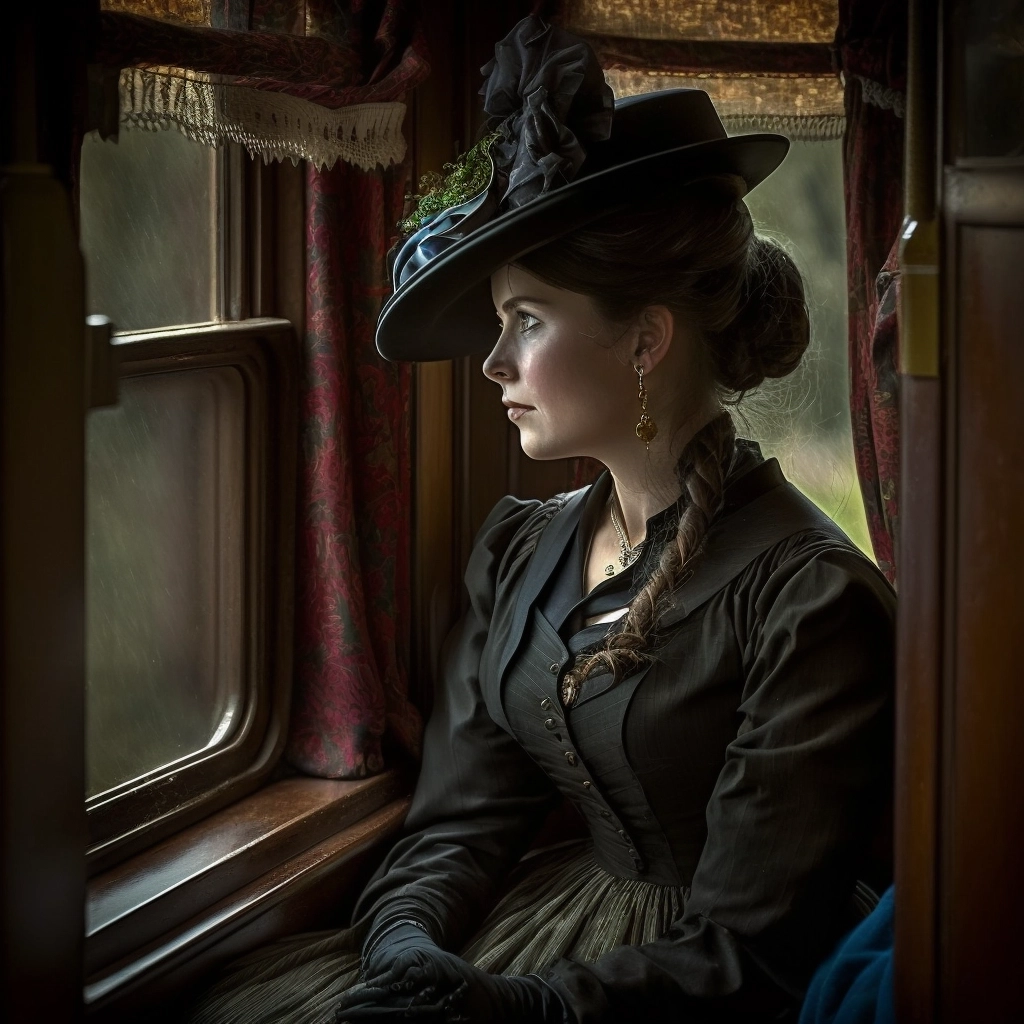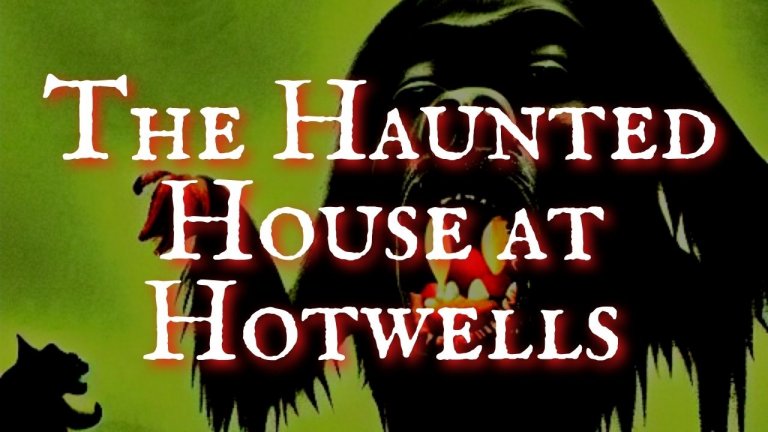The Girl on The Train

This version is taken from the 2022 lovely hardback Watkins edition of English Folktales, edited by Neil Philip with a foreward by Neil Gaiman.
Hare says he got this story about Dr Watson from Mrs T. which he wrote down in his journal on April 29, 1879 while in London.
The original story is from volumes 4-6 of Hare’s autobiography which you can read for free thanks to Gutenberg here:
https://www.gutenberg.org/ebooks/42770
The Girl on The Train
Journal.
“April 29, 1879, London.—I have heard again the curious story of Sir T. Watson from Mrs. T., to whom he told it himself, so will write it down.
“Sir Thomas Watson, better known as Dr. Watson, was a well-known physician. During the last years of his life he was in failing health, and only saw patients at his own house, but till then he went about in England wherever he was sent for. One day he was summoned to attend an urgent case at Oxenholme in Cumberland. There was only one carriage in the train which went through to Oxenholme, and in a compartment of that carriage he took his seat. He tipped the guard, and said he should be glad to be alone if he could.
“The train at Euston was already in motion, when a young lady came running down the platform, with a porter laden with her hand-bags and cloaks. The man just contrived to open the carriage door, push the young lady in, throw in her things after her, and the train was off. The young lady, a very pretty, pleasing young lady, took the seat opposite Dr. Watson. Being a polite, gallant old gentleman, very soon Dr. Watson began to make himself agreeable: ‘What beautiful effects of cloud there were. How picturesque Harrow church steeple looked through the morning haze,’ &c. &c., and the young lady responded pleasantly. At last, as their acquaintance advanced, Dr. Watson said, ‘And are you travelling far?’ ‘Oh yes,’ said the young lady, ‘very far, I am going to Oxenholme in Cumberland.’ ‘How singular,’ said Dr. Watson, ‘for that is just where I am going myself. I wonder if you happen to know Lady D. who lives near Oxenholme.’ ‘Yes,’ said the young lady, ‘I know Lady D. very well.’ ‘And Mrs. P. and her daughters?’ said Dr. W. ‘Oh yes, I know them too.’ ‘And Mr. Y.?’ There was a moment’s pause, and then the young lady very naïvely and ingenuously said, ‘Yes, I do know Mr. Y. very well; and perhaps I had better tell you something. I am going to be married to him to-morrow. My own parents are in India, and I am going to be married from his father’s house. Since I have been engaged to him, I have made the acquaintance of many of his friends and neighbours, and that is how I know so many people near Oxenholme, though I have never been there before.’
“Dr. Watson was charmed with the simple candour of the young lady. They went on talking, and they became quite friends. The train arrived at Rugby, and they both got out and had their bun in the refreshment-room. They were in the carriage again, and the train was already moving, when, in great excitement, the young lady called out: ‘Oh stop, stop the train, don’t you see how he’s urging me to get out. There! that young man in the brown ulster, that’s the young man I’m going to be married to.’ Of course it was impossible to get out, and the young lady was greatly distressed, and though Dr. Watson assured her most positively that there was no one standing where she described, she would not and could not believe him.
“Then Dr. Watson said, ‘Now, my dear young lady, you’re very young and I’m very old. I am a doctor. I am very well known, and from what you have been seeing I am quite sure, as a physician, that you are not at all well. Now, I have my medicine chest with me, and you had better let me give you a little dose.’ And he did give her a little dose.
“The train arrived at Stafford, and exactly the same thing occurred. ‘There, there! don’t you see him! that young man with the light beard, in the brown ulster, don’t you see how he’s urging me to get out.’ And again Dr. Watson assured her there was no one there, and said, ‘I think you had better let me give you another little dose;’ and he gave her another little dose.
“But Dr. Watson naturally felt that he could not go on giving her a dose at every station all the way to Oxenholme, so he decided within himself that if the same thing happened at Crewe, the young lady’s state indicated one of two things: either that there was some intentional vision from Providence, with which he ought not to interfere; or that the young lady was certainly not in a state of health or brain which should allow of her being married next day. So he determined to act accordingly.
“And at Crewe just the same thing happened. ‘There, there! don’t you see him! he’s urging me more than ever to get out,’ cried the young lady. ‘Very well,’ said Dr. Watson, ‘we will get out and go after him,’ and, with the young lady, he pursued the imaginary figure, and of course did not find him. But Dr. Watson had often been at Crewe station before, and he went to the hotel, which opens on the platform, and said to the matron, ‘Here is this young lady, who is not at all well, and should have a very quiet room; unfortunately I am not able to remain now to look after her, but I will leave her in your care, and to-morrow I shall be returning this way and will come to see how she is.’ And he slipped a five-pound note into the woman’s hand to guarantee expenses.
“Dr. Watson returned to the railway carriage. There was another young lady there, sitting in the place which the first young lady had occupied—a passenger who had arrived by one of the many lines which converge at Crewe. With the new young lady he did not make acquaintance, he moved his things to the other side of the carriage and devoted himself to his book.
“Three stations farther on came the shock of a frightful accident. There was a collision. The train was telescoped, and many passengers were terribly hurt. The heavy case of instruments, which was in the rack above the place where Dr. Watson had first been sitting, was thrown violently to the other side of the carriage, hit the young lady upon the forehead and killed her on the spot.
“It was long before the line could be sufficiently cleared for the train to pass which was sent to pick up the surviving passengers. Many hours late, in the middle of the night, Dr. Watson arrived at Oxenholme. There, waiting upon the platform, stood the young man with the light beard, in the brown ulster, exactly as he had been described. He had heard that the only young lady in the through carriage from London had been killed, and was only waiting for the worst to be confirmed. And Dr. Watson was the person who went up to him and said: ‘Unfortunately it is too true that a young lady has been killed, but it is not your young lady. Your young lady is safe in the station hotel at Crewe.’”
Thomas Watson
Dr Thomas Watson (1792-1882) was a physician who was president of the Royal College of Physicians from 1862-1866. The Royal College of Physicians was founded in 1518 by royal charter of Henry VIII. It is the oldest medical college in England and is to be found at Regent’s Park, London.
Watson became physican ordinary to Queen Victoria in 1870, when he was 78.
Oxenholme Junction, now known as Oxenholme – The Lake District was known as Kendal Junction up until 1860, and it is in Westmorland not Cumberland as incorrectly stated by Hare and repeated without correction by Neil Philips. But we can forgive them both as it is a good story.

The Accident
There is a listing of railway accidents in the UK. We are looking between 1860, when Oxenholme got its name and 1882, when Dr Watson died, though more likely between 1860 and 1870 when he became physician to the Queen and was 78.
The accident must have happened on the West Coast main line between Crewe and Oxenholme, but sounds like quite a way short of Oxenholme, so somewhere in Cheshire or Lancashire.
One likely candidate is the Warrington Rail Crash which happened on June 29th, 1867 (which Watson would have been 75, so accounting for failing health in old age, but still working as we know he was a physician still in 1870).
This was due to a signalman’s error and eight people were killed and seventy injured. The passenger train rain into the back of a coal train. But when I dig deeper, this train was going the wrong way — it was heading south from Liverpool to London, so it’s not that one. Pity.
The next best one is the Wigan Rail Crash which happened at Wigan North Western Station on 3 August 1873, though it was in the early morning. This train left London at 8pm on 2 August. It stopped at Crewe, but the 16th coach derailed in a hail of sparks. 13 were dead and 30 injured. The rest of the train continued north, ninety minutes later. Many of the passengers were aristocrats heading to Scotland for the grouse shooting season.
By this time, Dr Watson is 81! The only slight concern I have is that this accident happened in the morning. The train was delayed by 90 minutes and Wigan to Oxenholme is 60 miles and a modern train will do this in 43 minutes.
In the 1850s trains could get up to 80 mph (I see this from the Internet), but it would be stopping and not maintaining that so, let’s say 2 hours plus a delay of an hour and a half, which does not put us into the middle of the night, but like Oxenholme being in Cumberland, the middle of the night arrival might be a mistelling.
Here’s the official report into the 1873 accident. The crash happened in ‘the early morning’
https://www.railwaysarchive.co.uk/docsummary.php?docID=7804
Augustus Hare
This story is from Augustus Hares’s six-volume autobiography, The Story of My Life, which came out in London in 1896.
Augustus John Cuthbert Hare was the youngest son of Francis George Hare of Herstmonceux, East Sussex, and Gresford, Flintshire, Wales.
Augustus Hare was born in Rome on 13th March, 1834. His aunt, the widow of Augustus Hare, took him in and raised him as her own. In his autobiography, The Story of My Life, he talks about how much he loved his adopted mother, Maria, and how unhappy he was at Buckwell Place, where he was homeschooled.
His elder sister died and his mother was blamed for preferring society to looking after her children.
Hare says, ‘Here on the 13th of March 1834 I was born—the youngest child of the family, and a most unwelcome addition to the population of this troublesome world, as both my father and Mrs. Hare were greatly annoyed at the birth of another child, and beyond measure disgusted that it was another son.’
Augustus Hare came from a well-connected “county” family. He thought of himself as a “gentleman” in a very specific way, and he used his status to advance his social and writing careers. His beautiful watercolours of the Mediterranean and other places added to and grew his work as a travel writer.
A year later, in August 1835, his aunt and godmother, Maria, the widow of his uncle Augustus William Hare, took him in and raised him as her own. He was taught by the Rev. Robert Kilvert at Hardenhuish rectory in Wiltshire when he was young. While there, he became friends with Kilvert’s son, Francis, who is now known as a diarist. He only went to school at Harrow for a year, from 1847 to 1848, because he was sick. After that, he had private tutors until 1853, when he went to University College at Oxford.
After getting his degree in 1857, Hare spent a year in Italy. He then went back to England to write his first guide books. He wrote Murray’s Handbook to Berks, Bucks, and Oxfordshire (1861) without his name on it, but he put his name on Winter at Mentone (1864).
Hare died in 1903 and was buried in Herstmonceux. He had never been married.
Hare wrote a lot of books, which can be put into two groups: biographies of members of his family and people connected to them, and historical and descriptive accounts of different countries and cities. Memorials of a Quiet Life (about his adoptive mother), Story of Two Noble Lives (about two sisters who were both artists), The Gurneys of Earlham (about a family of bankers and social reformers who lived in Earlham Hall near Norwich), and a six-volume autobiography are all part of the first. This last one had a number of stories about ghost sightings. “Mr. Hare’s ghosts are rather more interesting than his lords or his middle-class people,” said a reviewer in the New York Times.
He also put together many travel books, including a couple for John Murray and many under his own name, such as Walks in Rome, Walks in London, Wanderings in Spain, Cities of Northern, Southern, and Central Italy (each a separate book), Days near Rome, and Sussex.
Hare was friends with the lawyer Basil Levett and his wife, Lady Mary Levett, who was the daughter of the Earl of Shaftesbury. Hare left a painting to Basil Levett and his wife, Lady Mary Levett, in his will.
https://www.gutenberg.org/ebooks/35589


